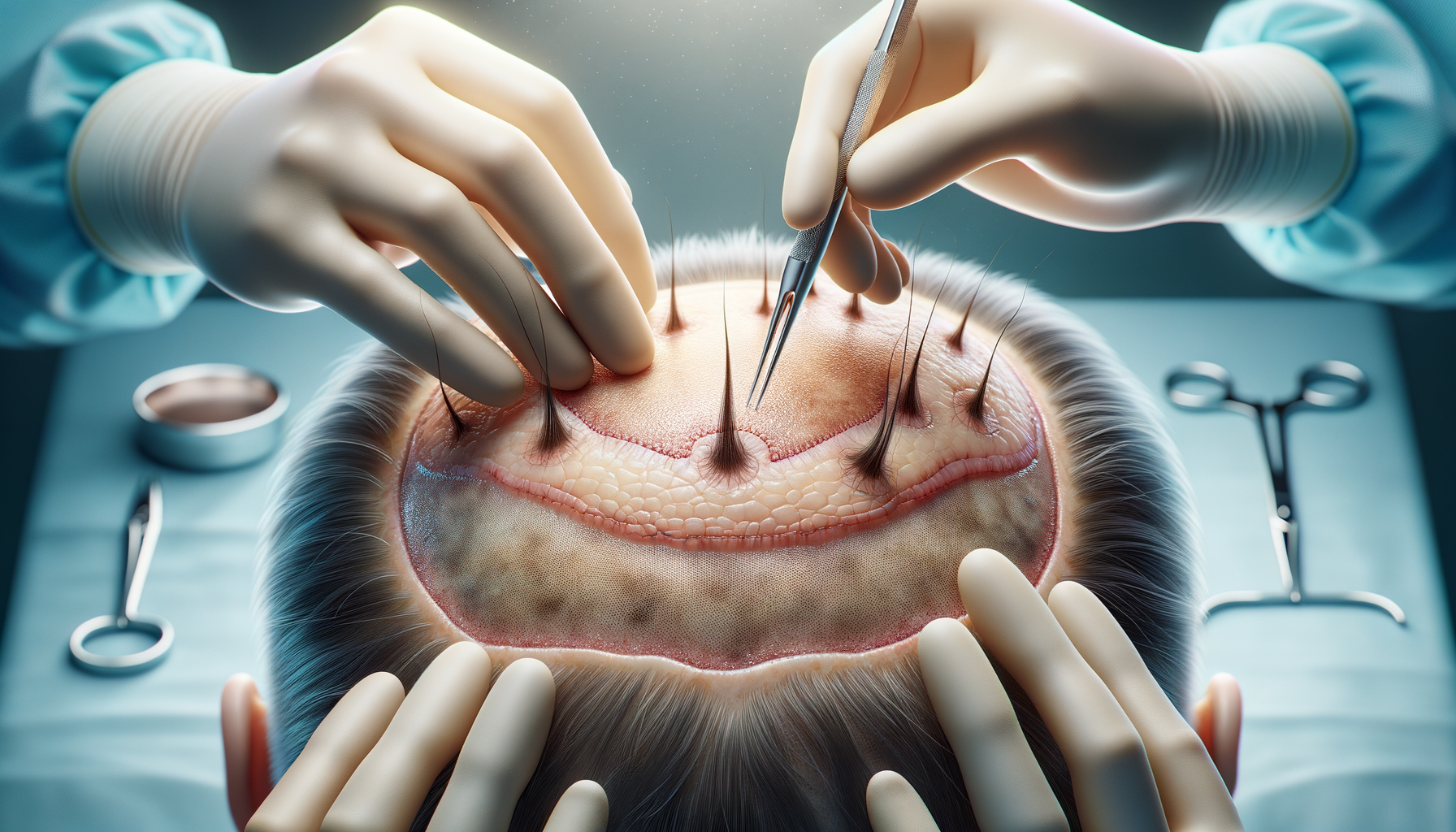Understanding Hair Transplantation
Hair transplantation is a surgical procedure that involves moving hair follicles from one part of the body, known as the donor site, to a balding or thinning area, referred to as the recipient site. This technique is primarily used to treat male pattern baldness, but it is also effective for women experiencing hair thinning. The significance of hair transplantation lies in its ability to provide a permanent solution to hair loss, which can significantly impact a person’s self-esteem and confidence.
The two most common methods of hair transplantation are Follicular Unit Transplantation (FUT) and Follicular Unit Extraction (FUE). FUT involves removing a strip of skin with hair follicles from the donor site, usually the back of the head, and then dissecting it into individual follicular units. FUE, on the other hand, involves extracting individual hair follicles directly from the donor site using a specialized tool. Both methods have their advantages and are chosen based on the patient’s needs and the surgeon’s expertise.
Hair transplantation is not just about aesthetics; it is a life-changing procedure for many. It can restore not only hair but also confidence and a sense of youthfulness. As technology advances, these procedures have become more accessible and offer natural-looking results, making them a popular choice for those battling hair loss.
The Process of Hair Transplantation
The journey of hair transplantation begins with a detailed consultation with a qualified surgeon. During this initial meeting, the surgeon evaluates the patient’s hair loss pattern, discusses their expectations, and determines the most suitable transplantation method. This step is crucial to ensure that the patient has realistic expectations and understands the potential outcomes of the surgery.
Once the procedure is scheduled, the patient undergoes pre-operative preparations, which may include avoiding certain medications and alcohol. On the day of the surgery, local anesthesia is administered to the donor and recipient areas to minimize discomfort. The surgeon then proceeds with either FUT or FUE, depending on the agreed plan.
The transplantation process can take several hours, depending on the extent of the hair loss and the number of grafts needed. After the surgery, patients are provided with post-operative care instructions, which are vital for the healing process and the success of the transplant. Recovery time varies, but most patients can return to their normal activities within a week, with full results becoming visible over the following months.
The meticulous nature of hair transplantation requires a skilled surgeon to achieve optimal results. The precision in placing each follicle ensures that the transplanted hair grows naturally and blends seamlessly with the existing hair. This attention to detail is what makes hair transplantation a sought-after solution for hair restoration.
Benefits and Considerations of Hair Transplantation
Hair transplantation offers numerous benefits, making it an appealing option for those struggling with hair loss. One of the most significant advantages is the natural appearance of the transplanted hair, which grows and behaves like natural hair. This is because the transplanted hair follicles are taken from the patient’s own scalp, ensuring compatibility and reducing the risk of rejection.
Another benefit is the permanence of the results. Unlike temporary solutions such as wigs or hairpieces, hair transplantation provides a long-lasting solution that doesn’t require ongoing maintenance. This can be particularly appealing for individuals seeking a one-time investment in their appearance.
However, hair transplantation is not without considerations. The cost can be a significant factor, as the procedure can be expensive, depending on the extent of the hair loss and the number of grafts required. Additionally, like any surgical procedure, there are risks involved, such as infection or scarring, although these are rare when performed by experienced surgeons.
It’s essential for potential candidates to weigh these factors and consult with a qualified professional to determine if hair transplantation is the right choice for them. With careful consideration and expert guidance, hair transplantation can be a transformative experience, offering a renewed sense of confidence and self-assurance.








